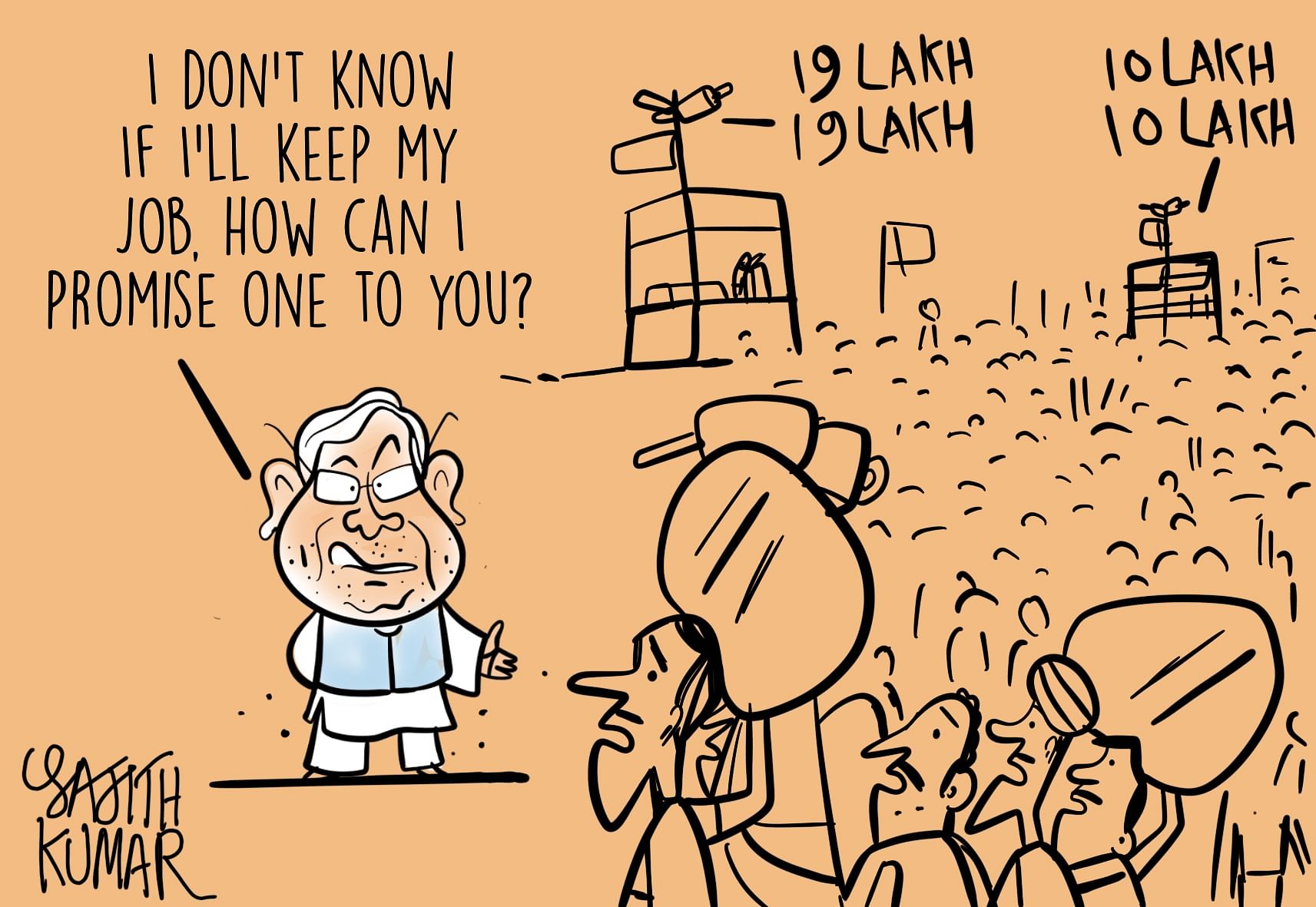
A vaccine vow and the resultant row, jibes on job promises, and an election in which the personalities that dominated the state’s political landscape for over three decades are no longer driving it – the 2020 election in Bihar, the cradle of socialist politics, promises to be one of the most keenly contested polls in the state in 20 years.
The last time it was a tight election in Bihar was in February 2005, when after more or less 15 years of Lalu Prasad and his wife Rabri Devi’s rule, voters threw up a hung verdict. Lalu’s RJD had emerged as the single largest party, but it needed the Lok Janshakti Party (LJP)’s 29 MLAs to get past the half-way mark. The then LJP chief Ram Vilas Paswan, however, put forth a strange condition to play kingmaker for either Lalu’s RJD or for Nitish Kumar’s JD(U) – a Muslim had to be made chief minister. Neither party was ready to meet his demand. Nitish Kumar took oath as chief minister, hoping to sway Paswan, but had to step down within a week.
Ram Vilas Paswan passed away earlier this month. Lalu Prasad is in jail, and not even on the posters of his party. Nitish Kumar is struggling to hold his own against ally BJP, which is highlighting the Modi model, rather than Nitish’s ‘Sushasan Babu’ image. Lalu’s son Tejashwi Yadav is leading the RJD charge and is the chief ministerial candidate of the RJD-Congress alliance. Chirag Paswan, Ram Vilas’ son, is carrying the LJP’s torch, torching as it were his party’s alliance with the Nitish Kumar-led alliance in Bihar but trying hard not to burn the bridge with the BJP.
“Chirag Paswan is playing smart politics. His eyes are fixed on the 2025 polls, but it is not that he has given up on 2020. He has positioned himself in a neutral position and can switch to either side (NDA or RJD-Congress), and he won’t antagonise the central leadership of the BJP even if he goes over to the other side. This is ‘pragmatic politics 2.0’ by Ram Vilas Paswan’s son,” says political analyst Rasheed Kidwai.
While Chirag has kept up the attack on Nitish Kumar, he has showered effusive praise on the BJP leadership, batting for a BJP-led government in the state, but has also refrained from going aggressive against Tejashwi Yadav. All indications are that the BJP and the RJD will win the most seats in their alliances, thus leaving both options open for Chirag in a post-poll scenario. And his vision of ‘Bihar first and Bihari first’ is a demand that either BJP or RJD could accept without difficulty, unlike his father’s ‘Muslim CM only’ demand of 2000. And, of course, a Deputy CM post would be nice, and a matter of negotiation.
Within the BJP, Bihar deputy CM Sushilkumar Modi’s stock has fallen. Once called “Chhota Modi” and credited with having highlighted the fodder scam that eventually put Lalu in jail, Sushilkumar is seen as being too close to Nitish Kumar, giving his detractors within the party a chance to limit his role. That he is now down with Covid-19, with elections only a few days away, doesn’t help his cause.
As the personality cult takes a backseat, real issues have come into full play. The sudden and long Covid-19 lockdown which resulted in a massive reverse migration of workers from cities to their home states and the spread of the pandemic have brought to the fore the problems of unemployment and lack of healthcare like never before. Issues like social justice and reservations, Hindutva and secularism seem passe. Indeed, one doesn’t even hear much about BJP’s ‘triumphs’ such as Ram temple, triple talaq and Article 370. The party has realised these are not catching on.
One reason why the social justice plank, long the staple of politics in Bihar, is absent is that people seem to have moved away from caste loyalty-centric approach. While the Lalu years saw the dominant OBCs and Muslims in the political discourse, under Nitish Kumar over the last 15 years, it was time for the EBC, Mahadalits and the upper castes to assert themselves. But nothing much has changed for any of them on the ground in the last 30 years. At best, Nitish Kumar can point to road connectivity to cities and villages as a significant change and the improvement in law and order. Voters in Bihar, especially younger voters who have obtained an education in cities outside the state, have tired of this. They are looking for substance rather than symbolism, forcing the political parties to rewrite their narratives.
Realising this, the BJP this week sprang a surprise, and controversy, by announcing “free Covid-19 vaccine for Bihar,” inviting scorn from the Opposition which has been targeting the Nitish Kumar government on its handling of the Covid-19 crisis, highlighting the mess in the state’s hospitals and the tragic deaths of migrants on their way to the state.
While the JD(U) manifesto boldly asserts that Nitish Kumar will not tolerate the three Cs -- ‘Crime, Corruption and Communalism’ -- the voters’ focus seems to have shifted to livelihood and health issues.
While Tejashwi Yadav caught onto this early and came out with a promise of 10 lakh jobs, the BJP seized on it and has come up with its own promise of creating 19 lakh jobs as well as Rs 2 lakh ex-gratia for the kin of migrant workers who died in another state. Nitish Kumar mocked the RJD’s jobs promise but the JD(U) manifesto, too, promises measures to create jobs for the youth. The word “rozgar” (employment) figures seven times in the JD(U) manifesto.
Knowing well that with a large portion of Bihar’s nearly two million people working outside the state have come back jobless, Nitish Kumar has set up a ‘Migration Commission’ and his manifesto promises a mega skills-training centre in every district to train youth in apparel-making, servicing electrical goods, solar panels, beauty and wellness training. Nitish had earlier promised the migrants that they would not need to go outside the state again for jobs.
The anger of the migrant voters is one factor that could affect the JD(U)-BJP combine in the state. Most migrant labourers belong to the Extremely Backward Classes and Mahadalits, the two social segments that Nitish has been drawing maximum support from.
Nitish could, however, bank on women voters for whom, over the years, his government has had schemes like providing bicycles to schoolgirls (2006), Mukhyamantri Kanya Uttan Yojana (2018) to provide Rs 54,000 to a girlchild from birth till she graduates. This year, he hailed as a significant moment the fall in fertility rate in Bihar from 4.3 in 2005 to 3.2 now, saying he is now all the more resolved to ensure girls’ education. The JD(U) manifesto promises cash assistance for unmarried girl students who graduate from school or higher education.
With jobs, education and training and better healthcare facilities dominating the election campaign discourse, is Bihar, until now a cauldron of caste politics, on the cusp of transformation?
